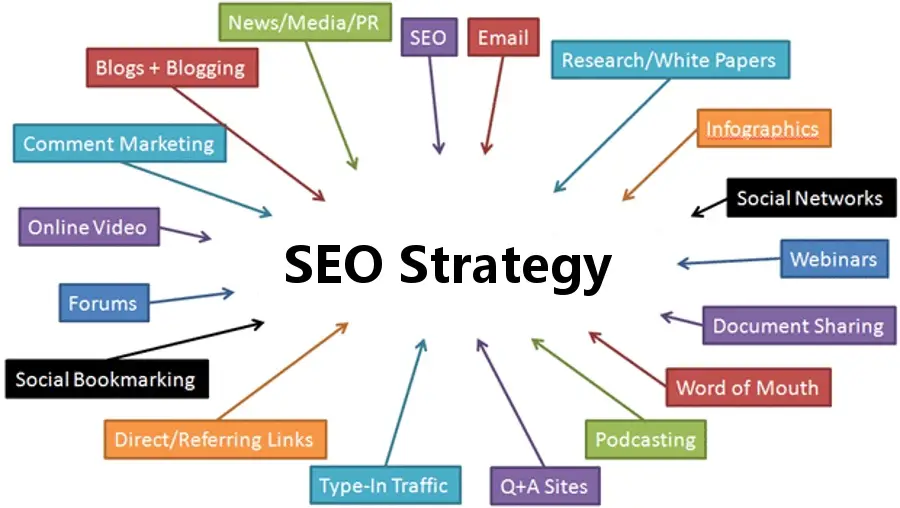Introduction to DeepSeek SEO
SEO is constantly evolving, and DeepSeek is one of the latest breakthroughs in search engine technology. Unlike traditional search engines that rely heavily on backlinks and keyword density, DeepSeek uses AI-driven intelligence to provide more precise and contextually relevant search results.
So, why should you care? If you’re an SEO professional, digital marketer, or business owner, understanding DeepSeek’s unique approach can help you get ahead of competitors before they even realize what’s happening.
In this guide, we’ll dive deep into hidden DeepSeek SEO strategies that no one is talking about—yet!
Understanding DeepSeek’s Unique Algorithm
AI-Driven Search Intelligence
DeepSeek doesn’t just match keywords to web pages. It understands the intent behind a query using deep learning models. This means that traditional keyword stuffing tactics are useless. Instead, content that aligns closely with user intent will rank higher.
How DeepSeek Processes Search Queries
Unlike Google, which relies on historical search data and user behavior patterns, DeepSeek:
- Analyzes context deeply to find the most relevant results.
- Uses neural network processing to understand relationships between words.
- Learns continuously from user interactions to refine search accuracy.
The Role of Deep Learning in Ranking
DeepSeek uses deep learning models similar to OpenAI’s GPT to rank content based on:
- Content Quality: Does the content provide genuine value?
- Engagement Metrics: How long do users stay on a page?
- Relevance Matching: Does the content truly answer the search intent?
This makes traditional SEO tricks like PBNs (Private Blog Networks) and spammy backlinks nearly useless. Instead, the focus shifts towards content relevance and user engagement.
Hidden Keyword Strategies with DeepSeek
Leveraging AI-Generated Long-Tail Keywords
Instead of chasing high-volume keywords, DeepSeek prioritizes long-tail, context-rich phrases. Using AI-driven keyword tools, marketers can discover new keyword opportunities based on user behavior trends rather than static search volume data.
Contextual Keyword Clustering
DeepSeek uses semantic grouping, meaning it understands topic clusters rather than individual keywords. To optimize for DeepSeek:
- Create interconnected content pieces rather than standalone articles.
- Use related subtopics naturally to create depth.
- Include conversational, question-based keywords since AI understands natural language better.
Semantic Search Optimization
Traditional SEO focuses on exact-match keywords, but DeepSeek values semantic relevance. To optimize for this:
- Use synonyms and natural language variations.
- Focus on answering intent-driven questions.
- Structure your content in a way that flows logically, making it easier for AI to process.
Advanced On-Page SEO for DeepSeek
Optimizing Structured Data for Better Results
DeepSeek places heavy emphasis on structured data markup (Schema.org). By implementing proper schema, you can help AI better understand your content and rank higher.
The Role of Entity-Based SEO
DeepSeek prioritizes entities over keywords. What does this mean?
- Instead of targeting a single keyword like “best running shoes,” focus on contextual entities like:
- Shoe material quality
- Running surface adaptability
- Shoe brand reputation
By providing comprehensive entity-based content, DeepSeek will recognize your site as an authority.
Content Layering for Higher Rankings
Rather than writing standalone blog posts, use a pillar-cluster model:
- Pillar Content: A broad, in-depth guide on a topic.
- Cluster Content: Smaller, related posts that link back to the pillar content.
DeepSeek favors this hierarchical content approach, helping boost rankings across multiple pages.
Off-Page SEO Tactics that Work with DeepSeek
Building Authority with Niche-Specific Backlinks
While traditional link-building focuses on quantity, DeepSeek values highly relevant and contextual links. This means:
- Industry-specific backlinks are more valuable than generic ones.
- Citations from expert sources carry more weight than random directory links.
The Impact of AI-Generated Citations
AI-generated content is everywhere, and DeepSeek identifies credible sources dynamically. If authoritative AI models cite your content, it can boost rankings.
The Power of Expert-Driven Content Endorsements
Influencer marketing is evolving. DeepSeek prioritizes expert-driven content, meaning content shared or endorsed by industry professionals will carry more weight than generic social media shares.
Technical SEO Hacks for DeepSeek
Fast Indexing Strategies
One of the biggest challenges in SEO is getting content indexed quickly. DeepSeek prioritizes fresh, relevant content, and there are a few tricks to speed up indexing:
- AI-Optimized Sitemaps – Ensure your XML sitemap is dynamically updated with every new post.
- Instant Indexing APIs – Some search engines offer APIs for immediate indexing requests.
- Internal Linking Boost – Link new content to high-ranking older pages to get crawled faster.
AI-Assisted Crawl Budget Optimization
DeepSeek’s AI-powered search engine allocates crawl budgets differently than traditional search engines. Instead of just looking at domain authority, DeepSeek prioritizes:
- Content freshness – The more regularly updated your site, the better.
- Engagement metrics – High time-on-page means more frequent crawls.
- Site architecture efficiency – Clean, well-structured sites are favored.
To optimize:
- Reduce duplicate pages.
- Use structured internal linking.
- Ensure your robots.txt file is AI-friendly.
Enhancing Website Architecture for AI Readability
DeepSeek prefers well-organized sites with clear navigation and structured content. A few best practices include:
- Flat URL structures for easier crawling.
- Breadcrumb navigation to help AI understand site relationships.
- Consistent schema markup to make information extraction seamless.
Content Strategies for Dominating DeepSeek
Creating AI-Friendly Long-Form Content
DeepSeek values in-depth, high-quality content over shallow, keyword-stuffed articles. To optimize:
- Write long-form (2,500+ words) content that fully answers user queries.
- Use clear subheadings (H2, H3, H4) for easy AI parsing.
- Structure content with bullet points and lists for readability.
Using Predictive Analytics for Trending Topics
AI-driven search engines like DeepSeek forecast search trends based on user behavior. To stay ahead:
- Use AI-powered SEO tools to predict rising search topics.
- Analyze real-time query trends to adjust content strategies.
- Update existing content regularly to stay relevant.
Human vs. AI Content: Striking the Right Balance
AI-generated content is on the rise, but DeepSeek prioritizes human-written, expert-backed articles. Instead of relying fully on AI, consider a hybrid approach:
- Use AI for research, topic ideation, and outlines.
- Write original content that reflects human expertise.
- Fact-check AI outputs for accuracy and uniqueness.

User Experience and Engagement Signals in DeepSeek
The Importance of Interactive Content
Engagement matters! DeepSeek measures user interaction to determine rankings. Here’s how to boost engagement:
- Quizzes and Polls – Interactive elements keep users engaged.
- Videos and Infographics – AI prioritizes multimedia-rich content.
- Clickable FAQs – Answer user questions directly within your article.
AI-Based Personalization and User Intent
DeepSeek personalizes search results based on user intent and behavior. To align with this:
- Implement dynamic content recommendations based on visitor preferences.
- Use interactive elements like AI chatbots to improve engagement.
- Structure content around searcher intent, not just keywords.
Measuring Engagement Metrics that Matter
DeepSeek looks beyond click-through rates (CTR) and analyzes:
- Time on Page – Longer session durations mean better rankings.
- Bounce Rate – Low bounce rates indicate relevant content.
- Scroll Depth – If users scroll to the end, DeepSeek recognizes content quality.
Local SEO Optimization with DeepSeek
How DeepSeek Handles Local Searches
DeepSeek has an advanced AI-driven local search mechanism. Unlike Google, it uses real-time user intent and contextual relevance to deliver personalized local results.
Optimizing Google My Business for AI Recognition
- Google My Business (GMB) still plays a critical role in DeepSeek local SEO.
- Keep NAP (Name, Address, Phone) consistent across all platforms.
- Use AI-optimized keywords in your business description.
- Encourage customer reviews, as DeepSeek values real-world user feedback.
Geo-Tagging Strategies for Better Local Visibility
DeepSeek rewards location-specific content:
- Embed Google Maps API on your site for stronger geolocation signals.
- Use location-based schema markup to reinforce local relevance.
- Create hyperlocal content (neighborhood guides, local events) to attract regional audiences.
Future of SEO with DeepSeek: What’s Next?
AI’s Evolving Role in Search
AI isn’t just shaping SEO—it IS SEO. DeepSeek is a major step towards fully AI-driven search engines. Future trends include:
- Conversational AI search (voice search and chatbot-powered queries).
- Zero-click searches (direct AI-generated answers instead of search results).
- More personalized search results based on behavioral data.
Predicting Future Algorithm Changes
SEO experts predict:
A shift towards zero-click AI-generated responses.
Less reliance on traditional backlinks and more on contextual authority.
An increased focus on real-time search data for rankings.
How to Future-Proof Your SEO Strategy
To stay ahead:

- Invest in AI-driven SEO tools for real-time insights.
- Prioritize quality, in-depth content over keyword stuffing.
- Adapt to conversational search trends (optimize for natural language).
Conclusion
DeepSeek is changing the SEO game with its AI-driven, intent-based search model. Unlike traditional SEO, it prioritizes:
Context over keywords
User engagement over backlinks
Personalization over generic ranking factors
SEO professionals who adapt early will dominate search rankings before the competition even catches on. The future of SEO is AI, and DeepSeek is leading the charge.
Are you ready to optimize for DeepSeek before the world catches up? 🚀
FAQs
1. How does DeepSeek differ from Google’s SEO?
DeepSeek relies more on AI-driven intent analysis rather than backlinks and keyword density. It values engagement metrics and contextual authority over traditional ranking factors.
2. Is DeepSeek SEO only for AI-driven content?
No! While AI plays a huge role, human-written, expert-backed content still performs best on DeepSeek. The key is to use AI as a tool, not as a replacement for human creativity.
3. What industries can benefit most from DeepSeek SEO?
Industries with highly technical, niche-specific content (e.g., healthcare, finance, law, and AI-driven tech companies) stand to benefit the most since DeepSeek prioritizes expert-driven content.
4. How can small businesses use DeepSeek to their advantage?
- Optimize for local search using geo-tagging and structured data.
- Leverage AI tools for predictive content marketing.
- Focus on long-tail, intent-driven keywords.
5. Will traditional SEO become obsolete with DeepSeek?
Not entirely, but traditional keyword-focused SEO will lose relevance. The future is contextual, AI-driven, and user-intent-focused SEO.

